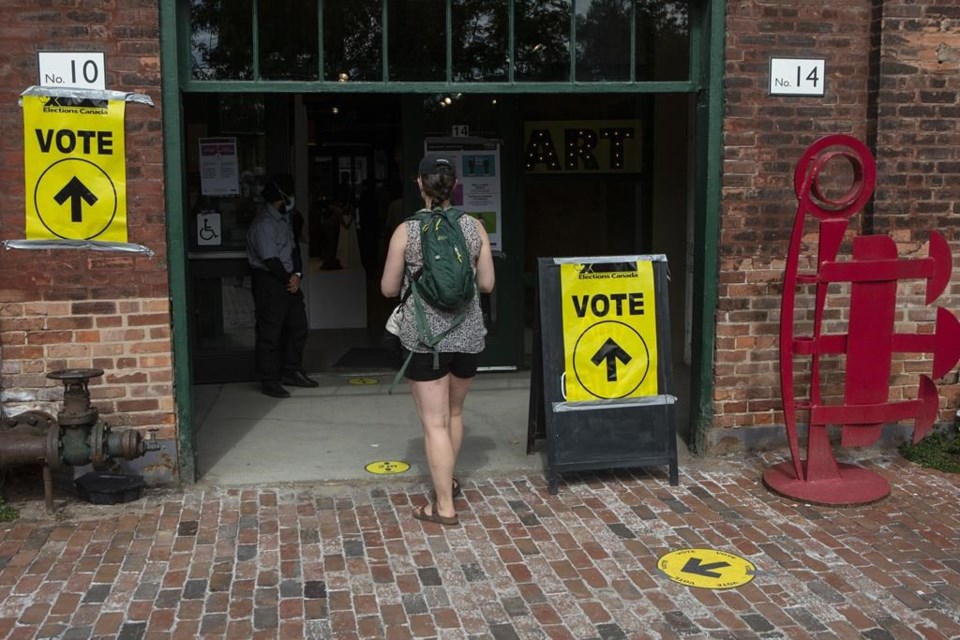TORONTO — Low turnout in Ontario's municipal elections could be partly attributed to non-competitive races, the non-partisan nature of local politics and other structural issues with the process, experts said Tuesday, urging communities to find ways to boost engagement before the next vote.
John Beebe, director of the Democratic Engagement Exchange at Toronto Metropolitan University, said Monday night's results should serve as a "wake-up call about the state of democracy and democratic engagement."
"This was abysmal and very worrying," Beebe said by phone.
Early numbers from the Association of Municipalities of Ontario show 36 per cent turnout across 301 of 444 municipalities that held local elections.
Those preliminary figures suggested turnout might be lower than the last municipal vote four years ago, which at 38.3 per cent represented the worst turnout among elections recorded since 1982.
Brampton and Mississauga saw less than 25 per cent of eligible voters come out to re-elect incumbents, while Toronto re-elected its mayor for a third term with 39 per cent turnout, according to AMO's figures.
In Ottawa, which held an open race of a new mayor, 44 per cent of eligible voters cast ballots – a sign Beebe said was "troubling," given that there was a competitive, engaged field of candidates.
"We would expect the highly competitive races, that we would be able to at least break the 50 per cent mark, but that's not what we're seeing," he said.
Factors behind the trend of diminishing turnout need to be better understood, he said.
One possibility is that people feel less connected and engaged in their communities, Beebe suggested. Lack of engagement in democracy through voting can have a "corrosive effect" on future civic engagement and faith in government, he said.
"You can go into a downward spiral, where you have less and less confidence in government decisions and then less and less engagement, if people don't feel like it reflects their ideas and their approaches," he said.
University of Windsor political scientist Lydia Miljan said municipal elections generally see lower turnout as voters have no political parties to guide their decisions. The introduction of political parties at a local level could help boost engagement, she suggested, as parties give voters "shortcuts" to understand a candidates' views.
The decline in local journalism also makes it difficult for voters to follow municipal races closely, she added. Local media outlets might lack the resources to cover city politics with the same scrutiny that provincial or federal politics receive, she said, leaving it up to voters to research candidates on their own.
"I think that the burden is much greater on the voter for a municipal race than a federal or provincial race," she said.
University of Toronto political science professor Renan Levine said high-profile but non-competitive races in places like Toronto – which saw nearly 40 per cent voter turnout – and Mississauga might have left voters unmotivated to participate.
And in open races, he said, voters may have had a hard time deciding who to support among crowded candidate fields.
There are also challenges in municipal elections when it comes to candidates connecting with voters, Levine said, because many are covering large wards with limited resources and little experience in politics.
Levine suggested some structural changes could be looked at to boost engagement – for example, smaller wards, longer election campaign periods, making it easier to vote online and more public financing of campaigns so upstart candidates have a stronger shot.
Miljan, of the University of Windsor, said voters in the province may also have been fatigued on Monday after a provincial election in June that had historically low turnout, and a federal election last fall.
Turnout could rise by the next election cycle, she said, if people grow tired of their current representatives and seek real change.
But Levine said he's not convinced that voters are fatigued by elections or by politics – he said they just aren't being engaged by campaigns.
"There's a lot of issues that, in reality, people really do care about," he said. "They want to express those views, but they need to know how to express it."
This report by The Canadian Press was first published Oct. 25, 2022.
Holly McKenzie-Sutter, The Canadian Press

